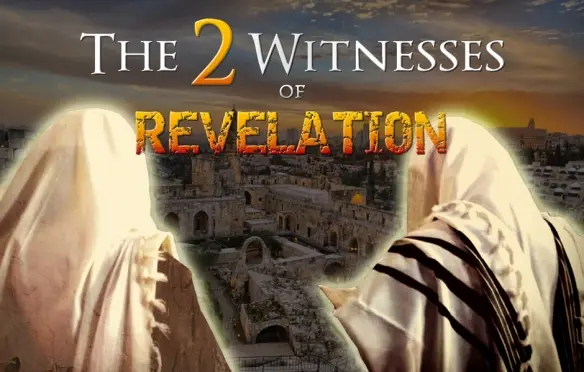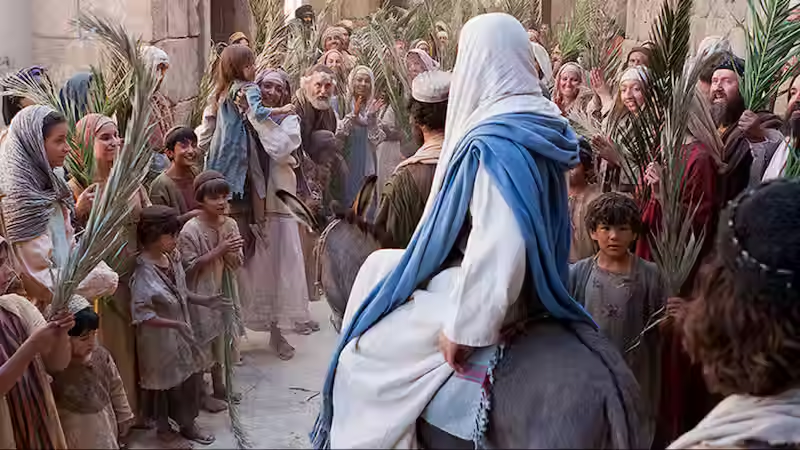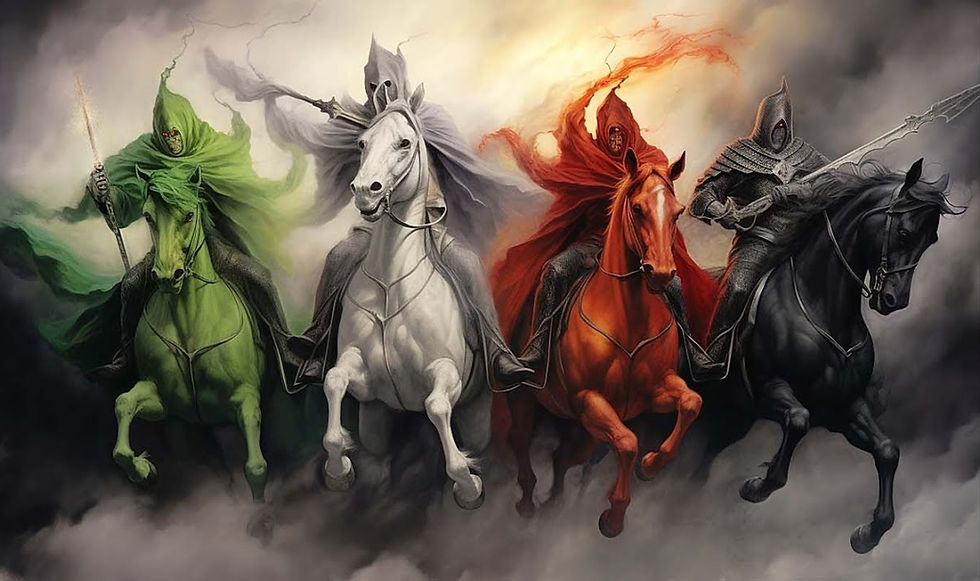The Two Witnesses of Revelation: Identifying their Role in the End Times
- carl1jimenez
- May 30
- 5 min read

The two witnesses described in the book of Revelation hold a central position in the prophetic framework of the end times. Yahweh’s plan for them encompasses roles of proclamation, judgment, and testimony, uniquely woven into the events preceding Yahshua’s return. This study explores their identity, role, and prophetic purpose as depicted in Revelation, drawing from scriptural cross-references and eschatological interpretations.
1. Biblical Description of the Two Witnesses
Revelation 11 provides the most detailed description of these two witnesses. John the Revelator writes:
“And I will give power unto my two witnesses, and they shall prophesy a thousand two hundred and threescore days, clothed in sackcloth. These are the two olive trees, and the two candlesticks standing before the Elohim of the earth” (Revelation 11:3–4).
These witnesses are described in symbolic language: "olive trees" and "candlesticks." The reference to olive trees evokes the image of oil—a symbol of Yahweh’s Spirit—while candlesticks (or lampstands) signify bearers of light or truth. Yahweh empowers these two individuals for a period of 1,260 days (or approximately three and a half years) to serve as His voice and emissaries, standing in direct opposition to the powers of darkness and deception that emerge during the end times.
2. The Identity of the Two Witnesses
While the identities of the two witnesses are not definitively revealed in Revelation, several theories have emerged from biblical typology and prophecy. Two popular interpretations identify the witnesses as figures from either the Tanakh (Old Testament) or the renewed covenant scriptures. Here are the primary perspectives:
Moses and Elijah: This view holds that the two witnesses are Moses and Elijah, based on their historical roles and the miracles they performed, which are paralleled in the signs attributed to the two witnesses. Moses, known for the plagues upon Egypt, represents the law; Elijah, who called down fire from heaven, represents the prophets. Together, they symbolize the full scope of Yahweh’s revelation.
Enoch and Elijah: Another interpretation proposes that Enoch and Elijah are the two witnesses because they are the only two individuals in Scripture who were "taken" by Yahweh without experiencing death (Genesis 5:24, 2 Kings 2:11). This interpretation suggests that they have returned to complete their earthly purpose by bearing witness during the tribulation period.
3. The Prophetic Role of the Two Witnesses
The mission of the two witnesses is multifaceted, extending beyond merely preaching a message. Their primary functions include:
Proclaiming Truth in a Time of Great Deception: During the tribulation, a period marked by unparalleled deception, these two witnesses serve as Yahweh’s truth-bearers. Their message will stand in stark contrast to the deceptive teachings and signs of the False Prophet and the Beast, as described in Revelation 13. They preach Yahweh’s word, calling for repentance and obedience, particularly to Yahweh’s laws and statutes, which will be rejected by the dominant global powers.
Performing Signs and Wonders: Revelation 11:5–6 describes their supernatural powers, granted by Yahweh, including the ability to stop rain, turn waters to blood, and strike the earth with plagues as often as they will. These powers echo those of Elijah, who stopped rain in Israel (1 Kings 17:1), and Moses, who turned the waters of the Nile into blood (Exodus 7:20). By wielding these signs, the witnesses testify to Yahweh’s power and remind the world that Yahweh alone holds sovereignty over creation.
Judging the Nations and Exposing Evil: The two witnesses are agents of divine judgment, exposing the idolatry, blasphemy, and rebellion that pervade the end-time world. They confront the Beast and his followers, holding them accountable to Yahweh’s standards. In this way, they serve as a living judgment, announcing the consequences that await the rebellious.
Martyrdom and Resurrection: Revelation 11:7–11 outlines a critical moment in the witnesses' mission: their eventual death and miraculous resurrection. When they complete their testimony, the Beast will wage war against them and kill them. Their bodies will lie unburied in the streets of Jerusalem for three and a half days as a testimony to the world’s contempt for Yahweh’s messengers. But after this period, they will be resurrected by Yahweh’s Spirit and ascend into heaven, shocking their enemies and signifying Yahweh’s triumph.
4. The Prophetic Purpose of the Two Witnesses
The role of the two witnesses goes beyond condemnation; it serves Yahweh’s redemptive purposes during the tribulation. Their testimony stands as a final call to repentance before the last judgments are poured out upon the earth. Yahweh’s purpose is not merely to punish but to invite humanity to turn back to Him. The two witnesses embody this call, serving as visible signs of Yahweh’s mercy amidst impending judgment.
Additionally, their resurrection will confirm Yahweh’s ultimate authority and demonstrate the reality of resurrection, one of the central promises of the Scriptures. The world, captivated by the deception of the Beast and False Prophet, will be forced to witness the truth of Yahweh’s power in the undeniable miracle of these witnesses’ resurrection and ascension.
5. Impact of the Two Witnesses on the World Stage
The two witnesses’ ministry will be highly public and provocative, attracting global attention. Revelation 11:10 suggests that people worldwide will celebrate their death, sending gifts to one another in mockery of their defeat. This response indicates the extent to which the world will reject Yahweh’s truth, rejoicing in what they perceive as the silencing of those who challenged their allegiance to the Beast.
However, the witnesses' resurrection and ascension will serve as a powerful counter-testimony to the world’s unbelief. Their supernatural reappearance from death will lead to fear among the unrepentant and will act as a vindication of Yahweh’s truth. Their ministry will leave an indelible impact, marking the final warning before the remaining judgments unfold.
6. The Two Witnesses and Yahshua’s Return
The ministry of the two witnesses, which spans 1,260 days, aligns with the last half of Daniel’s 70th week and the final period of tribulation. After their ascension, Revelation records a great earthquake, symbolizing Yahweh’s imminent intervention. Their ministry, culminating in their resurrection, appears to be one of the final signs preceding Yahshua’s return, as Yahweh prepares to intervene directly to judge the nations and establish His kingdom.
Yahweh’s Testimony Through His Witnesses
The two witnesses stand as Yahweh’s uncompromising representatives in a world engulfed in deception and rebellion. Their ministry serves as a witness to both Yahweh’s righteous judgment and His mercy. Through their testimony, Yahweh extends a final opportunity for humanity to repent and return to Him. Their role is both powerful and sobering, highlighting the gravity of the end times and the certainty of Yahweh’s plan for restoration and justice.
As we await the fulfillment of these prophecies, the message of the two witnesses calls believers today to examine their own witness and dedication to Yahweh’s truth. In a world increasingly hostile to scriptural truth, the two witnesses remind us of the cost of discipleship and the unwavering nature of Yahweh’s word. In this way, their story serves not only as an end-time prophecy but also as an inspiration for those who seek to uphold Yahweh’s truth until Yahshua’s return.
By: Carlos Jimenez



Comments